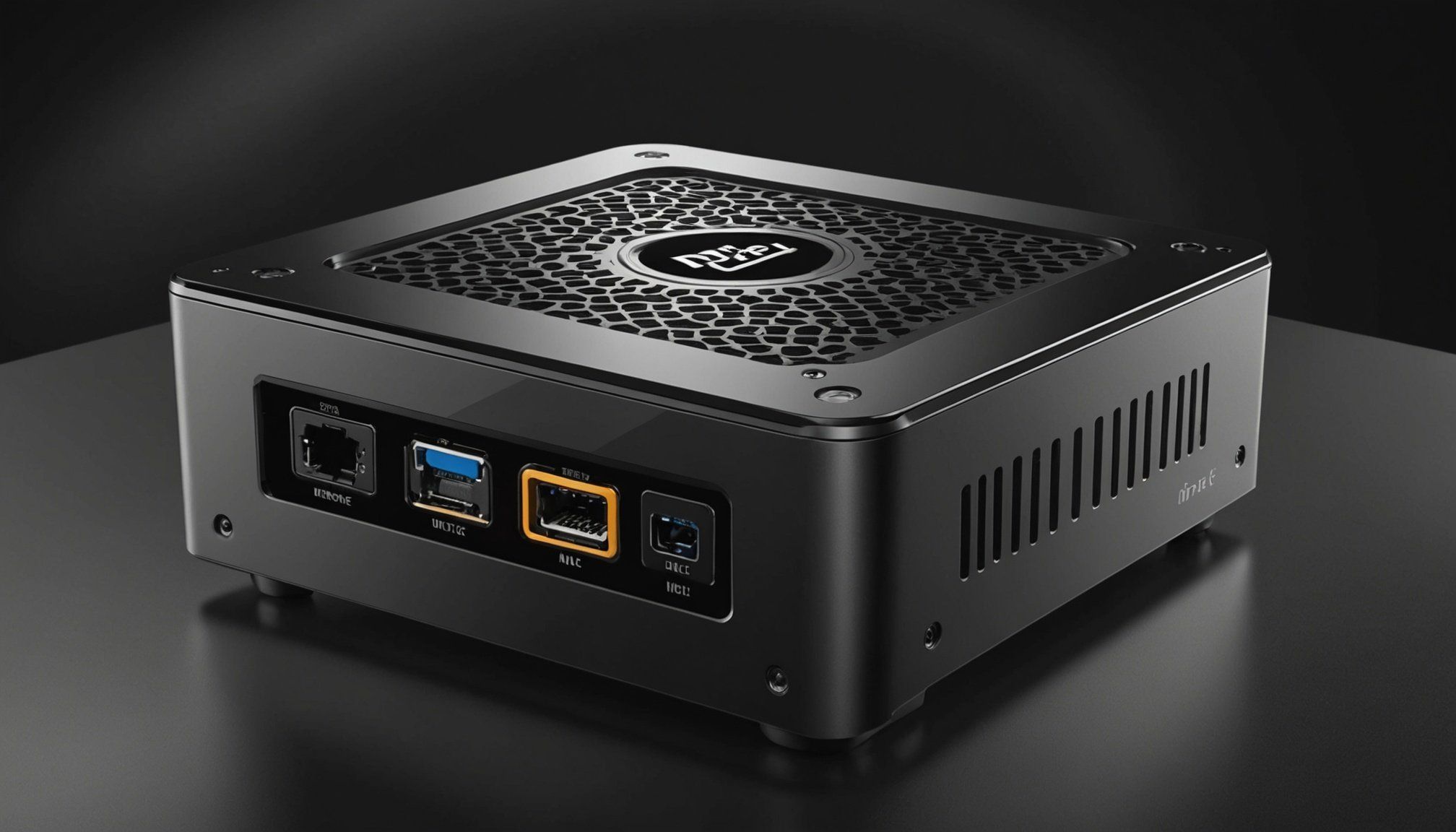Unlocking the Full Potential of Your Intel NUC: The Ultimate Guide to Crafting a High-Performance Plex Media Server
Why Choose an Intel NUC for Your Plex Media Server?
When it comes to building a high-performance Plex media server, the choice of hardware is crucial. Among the various options available, Intel NUCs (Next Unit of Computing) stand out for their compact size, powerful performance, and versatility. Here’s why an Intel NUC is an excellent choice for your media server:
- Compact and Energy-Efficient: Intel NUCs are mini PCs that are incredibly small, making them perfect for placement in any room without taking up much space. They are also energy-efficient, which is a significant advantage over larger, more power-hungry systems[3].
- High-Performance Capabilities: Despite their small size, Intel NUCs pack a punch when it comes to performance. Models like the Intel NUC 12 Pro Kit come with powerful processors such as the Intel Core i5-1240P, which offers up to 12 cores and 16 threads, ensuring smooth playback of high-resolution media files[2].
- Ease of Setup: Setting up an Intel NUC is relatively straightforward. They often come with Windows pre-installed, or you can easily install Linux or another operating system of your choice. This ease of setup makes them accessible even to those who are new to building media servers[1].
Choosing the Right Intel NUC Model
Not all Intel NUC models are created equal, and the right choice depends on your specific needs and budget. Here are some key factors to consider:
Also to see : Maximize Your ASUS ZenWiFi AX: Achieve Complete Mesh Network Coverage Across All Levels of Your Three-Story Home
Processor
The processor is the heart of your media server, and a higher processing power ensures better performance. For a Plex media server, an Intel Core i5 or i7 processor is more than adequate. The Intel NUC 12 Pro Kit, for example, features an Intel Core i5-1240P processor, which is more than capable of handling 4K video playback and other media tasks[2].
Storage Capacity
Storage is critical for a media server, as you need enough space to store your media files. Look for models that support high-capacity storage options, such as M.2 SSDs and hard drives. The Intel NUC 12 Pro Kit supports multiple storage configurations, including M.2 SSDs and SATA drives[2].
This might interest you : Maximize Your Lenovo ThinkPad X1 Carbon for Seamless Multi-Monitor Remote Productivity
Connectivity and Expansion
Ensure the NUC you choose has the right connectivity options. Look for models with multiple USB ports, HDMI outputs, and Ethernet connections. The Intel NUC 12 Pro Kit, for instance, offers a range of USB ports, including USB 4 (Type-C), USB 3.2, and USB 2.0, along with an Ethernet port for stable network connectivity[2].
Setting Up Your Intel NUC as a Plex Media Server
Setting up your Intel NUC as a Plex media server involves several steps, but it’s a process that can be completed with ease.
Hardware Setup
- Connectivity: Connect your Intel NUC to your TV or monitor using an HDMI cable. Ensure your TV supports the same resolution as your NUC.
- Power and Networking: Connect the power cable and an Ethernet cable for a stable internet connection. If you prefer wireless, make sure your NUC supports Wi-Fi or use a Wi-Fi dongle[1][3].
Operating System Installation
- Windows or Linux: You can use either Windows or Linux as your operating system. Windows comes pre-installed on many Intel NUC models, but you can also install a Linux distribution if you prefer. For a Plex server, both operating systems work well, but Linux is often preferred for its lightweight nature and ease of customization[1][4].
Installing Plex Media Server
- Download and Install: Download the Plex Media Server software from the official Plex website. Follow the installation instructions to set up the server.
- Configure Your Server: Once installed, configure your Plex server by pointing it to your media files, setting up your library, and configuring any additional settings such as transcoding and streaming quality[1].
Tips for Optimizing Your Plex Media Server
To get the most out of your Plex media server, here are some tips to optimize its performance:
Use a Fast Storage Solution
- SSDs: Using a solid-state drive (SSD) as your primary storage can significantly improve the performance of your Plex server. SSDs offer faster read and write speeds compared to traditional hard drives[3].
Ensure Adequate RAM
- RAM Requirements: Make sure your Intel NUC has sufficient RAM. For a Plex server, 8GB of RAM is a minimum, but 16GB or more is recommended for smoother performance, especially if you plan to transcode videos[2].
Optimize Network Settings
- Ethernet Connection: Use an Ethernet connection for your NUC to ensure a stable and fast network connection. This is particularly important if you plan to stream high-resolution content[1].
Regular Maintenance
- Updates and Backups: Keep your operating system and Plex software up to date. Regularly back up your media files to ensure they are safe in case of any hardware failure[4].
Comparative Analysis: Intel NUC vs. Other Mini PCs
Here’s a comparative analysis of Intel NUCs with other popular mini PCs for media servers:
| Feature | Intel NUC 12 Pro Kit | GEEKOM Mini IT8 | AMD Ryzen Mini PC |
|---|---|---|---|
| Processor | Intel Core i5-1240P | Intel Core i5-1135G7 | AMD Ryzen 5 5600X |
| Cores/Threads | 12/16 | 4/8 | 6/12 |
| Storage | M.2 SSD, SATA | M.2 SSD, SATA | M.2 SSD, SATA |
| RAM | Up to 64GB | Up to 64GB | Up to 64GB |
| Connectivity | USB 4, USB 3.2, Ethernet | USB 3.2, HDMI 2.0, Mini DP | USB 3.2, HDMI 2.0, Ethernet |
| Price | Around $500 | Around $300 | Around $400 |
| 4K Support | Yes | Yes | Yes |
Practical Insights and Actionable Advice
Here are some practical insights and actionable advice to help you make the most out of your Intel NUC Plex media server:
-
Use a Self-Hosted Solution: Hosting your own Plex server gives you full control over your media and ensures that your data is secure and private.
“`plaintext
“Hosting your own Plex server is like having your own personal Netflix, but with all your favorite movies and TV shows right at your fingertips.” – Plex User
“` -
Invest in Good Hardware: While Intel NUCs are compact and powerful, investing in good hardware such as SSDs and sufficient RAM can significantly enhance the performance of your media server.
“`plaintext
“Using an SSD for my Plex server was a game-changer. It made loading and streaming media so much faster.” – Home Media Server User
“` -
Regularly Update Your Software: Keeping your operating system and Plex software updated ensures you have the latest features and security patches.
“`plaintext
“Regular updates are crucial for maintaining the security and performance of your media server. It’s like keeping your car serviced to ensure it runs smoothly.” – Tech Enthusiast
“`
Building a high-performance Plex media server using an Intel NUC is a rewarding project that can enhance your home entertainment experience significantly. With the right hardware, proper setup, and regular maintenance, you can enjoy seamless streaming of your favorite media files.
Whether you’re a parent looking to centralize your family’s media collection or a self-hosted media enthusiast, an Intel NUC-based Plex server is an excellent choice. Here are some final tips to keep in mind:
- Make Sure You Have Enough Storage: Ensure you have enough storage capacity to hold all your media files. This could include a combination of SSDs and hard drives.
- Use the Right Operating System: Choose an operating system that you are comfortable with, whether it’s Windows or Linux.
- Keep Your Server Updated: Regularly update your operating system and Plex software to ensure you have the latest features and security patches.
By following these guidelines and tips, you can unlock the full potential of your Intel NUC and enjoy a high-performance Plex media server that meets all your media needs.











